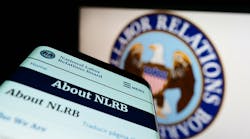By Dan Charney
1 Time kills deals. Time can be your enemy if you procrastinate on hiring decisions. Companies need to close candidates at the peak of their interest, i.e., from the time they hear about the job through their second and third interviews. If you don’t move during this time, the candidates’ interest level drops by 10% per day.
2 Vacant positions have high costs and negative impacts. It’s not uncommon for high-level positions to remain open upwards of 100 days. Unfilled positions actually cost companies staggering dollar amounts, not to mention other adverse effects, including the loss of idea generation, low employee morale, extra work for management and reduced competitive advantage. Do you know your cost of a vacant position?
3 The perfect match does exist. More than 25% of organizations don’t know what they’re looking for in a candidate before they begin searching. To find the perfect match, you must first define and outline required competencies, including skills, motivations, behaviors, etc., for the job at hand. Doing your homework will help avoid mismatches.
4 Yesterday’s success is today’s failure. The job market is fluid and continually changing. In turn, companies need to be creative and flexible with how they are attracting talent. In other words, you must be open to adopting and using a mix of hiring methods. And, if you aren’t practicing contemporary methods, you’ll fall behind. Check out the hiring methods of other savvy organizations and hiring managers, and compare your process with theirs.
5 Top performers are less likely to post their resumes on a job board. Most people placing resumes on electronic job boards are actively seeking employment. However, some of the most desirable candidates are currently employed and much less likely to post their resumes on job boards. These passive candidates are often found by networking at business events, associations and through the online network www.LinkedIn.com.
6 It’s in your job description. Bringing top talent to your organization is part of your job. It is no longer a task for which you can solely rely on the HR department or in-house recruiter. To win the talent war, you need to be armed with the latest training and technology.
7 Every organization has dead wood. It’s time to drop your dead wood. Get rid of those poor and mediocre workers dragging you and your department down, and replace them with star players. A decisive action will yield a high, immediate return on investment.
8 Testing can be a useful tool. Know what tests to use based on the information you are looking for about the candidate. Administer candidate testing up front. Determine strengths and weaknesses from the start, and use that information as a tool throughout the interview process.9 Image is everything. Remember that, while you are evaluating the candidate, he or she is evaluating you and your company. Create a favorable perception, since negative perceptions will cause top talent to steer clear of your company. Decide what sets your company apart and spread the word. Become an employer of choice.
10 Gut instincts are usually correct. You’ve invested a lot of time, effort and company resources to bring a candidate to the brink of hiring. Now is not the time to pull back or slow down the process. Be a good decision maker, and go with your gut instinct. It’s usually correct.
Dan Charney is managing partner at Direct Recruiters Inc., a firm that helps packaging and material handling companies build reliable workforces. For more information, visit www.directrecruiters.com; call 440-248-3370, ext. 110; or e-mail [email protected].




